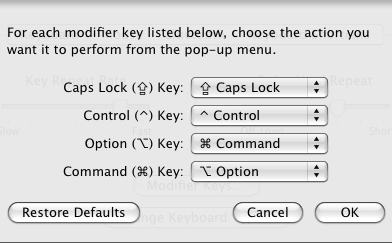I’ve complained before about the lack of good keyboards on the market. Why is it that in 2008 I can’t find one worth spending money on? This drives me absolutely nuts that I can’t find what I’m looking for:
- Cross Platform – Yes Virginia, I want it to work with any computer I hook it up to, no questions asked.
- Rechargable – I am tired of AA batteries dying when I’m in the middle of something. Let me be green and recharge my devices.
- KVM Friendly – Like most professionals, I use a KVM switch. I would like my keyboard/mouse combo to be KVM friendly. I’m crazy.
- Comfortable – This really is why I’m so selfish. Most newer keyboards are much more comfortable than the Logitech Cordless Navigator Duo (circa 2002) that I have. I know that. I want something more comfortable. Not to mention my wrist pad is falling apart (glued together too many times) and it’s becoming squeaky and annoying.
Is this really outlandish? I think not, but maybe I’ve completely lost it. Every keyboard I’ve found doesn’t seem to meet all those requirements. In particular the use of bluetooth to be cordless seems to have made them very KVM unfriendly.
My current mouse massively sucks. I have a cordless one but gave up on it eating batteries. My corded one is a $15 Logitech Wheel mouse (one of the earlier optical ones Logitech came up with). The most basic laser mouse of all. What annoys me is that it’s tracking lately has become sub par and it sometimes skips just enough to be really irritating. My keyboard is showing the early signs of falling apart. It’s even starting to squeak when I type.
The MX 5500 and MX 5000 look nice, but that bluetooth hookup is notorious for being flaky with KVM switches. My setup adds cross platform so that’s too much money to find out it doesn’t work. The MX 3200 fixes that problem but it’s not rechargeable. I know I’m going to hate that. Then you have the Wave which will annoy me since I hate stupid keyboard designs. It’s not rechargeable either. I like my keyboards to bare at least a faint resemblance to the Model M.
Microsoft has two candidates, the Wireless Entertainment Desktop 8000 and 7000. Both Bluetooth. Both us that stupid Microsoft mouse design (the gold standard is the Logitech MX Revolution in my humble opinion). Not to mention they aren’t cheap either.
As a result, it’s 2008, and I hope my current keyboard and mouse hold out a little longer until someone can deliver a keyboard/mouse combo that doesn’t suck.
It’s 2008, and I can’t find a keyboard (and mouse). I’ve got 2 old Apple Extended Keyboard II’s, which are fantastic keyboards. I’m somewhat tempted to find and ADB->USB adapter and take those for a spin. Go retro.
 Most appliances sold in the US are now required to ship with the infamous
Most appliances sold in the US are now required to ship with the infamous  So I needed a longer USB cable. Newegg.com to the rescue. Found a nice generic brand cable with good reviews (they tend to be every bit as good as the 24K gold, diamond encrusted name brand cables you can buy at certain electronics stores). The irony of it all is that the shipping is just a few cents shy of being more than the cable. Still cheaper than going to the store, but silly it costs so much.
So I needed a longer USB cable. Newegg.com to the rescue. Found a nice generic brand cable with good reviews (they tend to be every bit as good as the 24K gold, diamond encrusted name brand cables you can buy at certain electronics stores). The irony of it all is that the shipping is just a few cents shy of being more than the cable. Still cheaper than going to the store, but silly it costs so much.